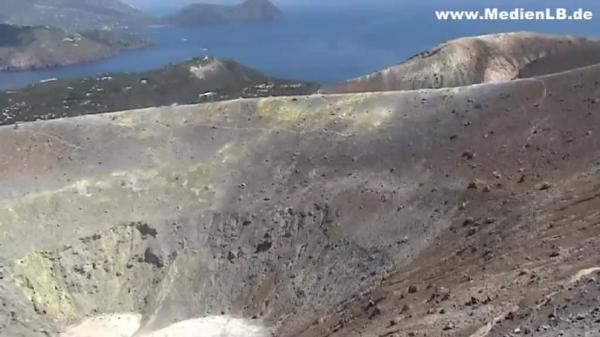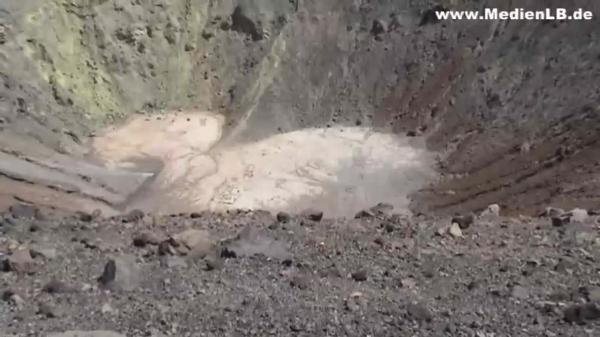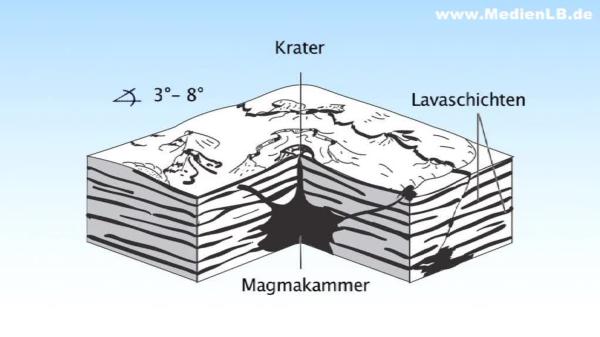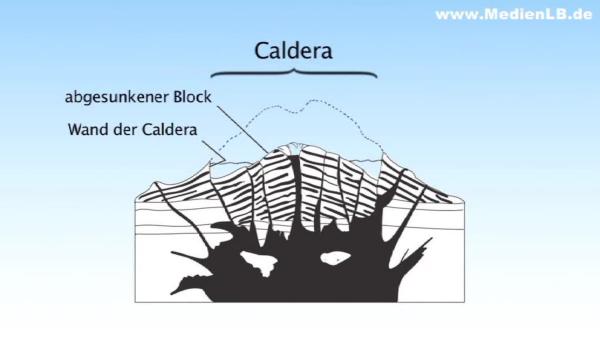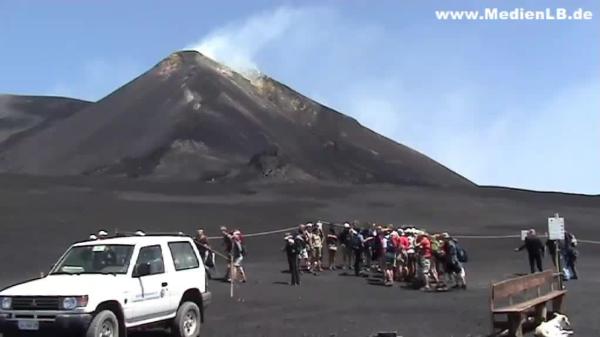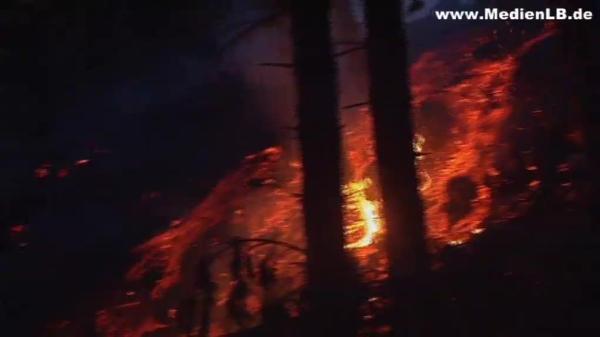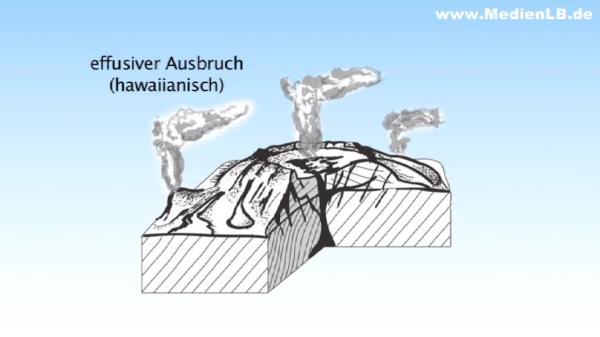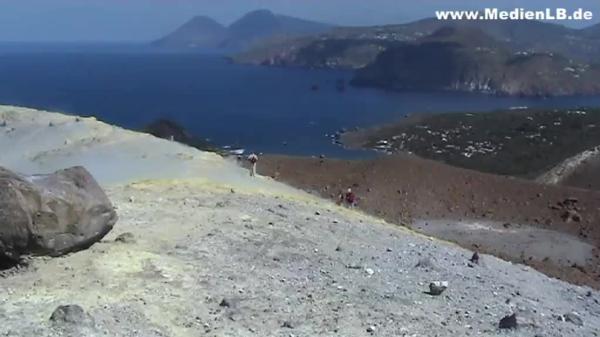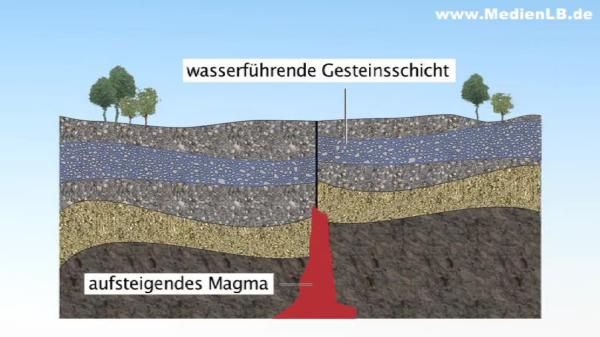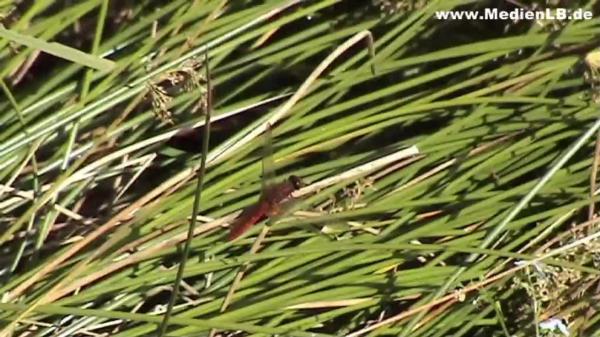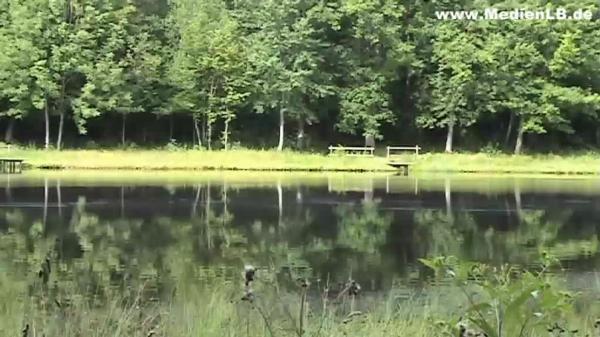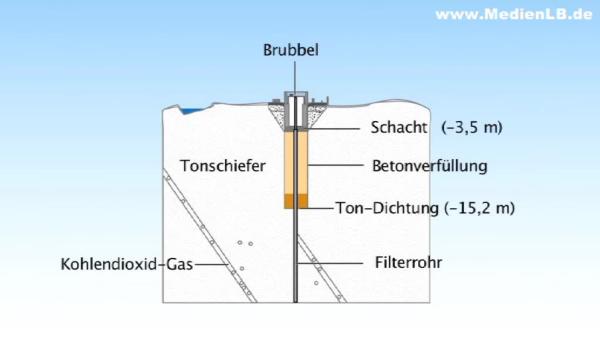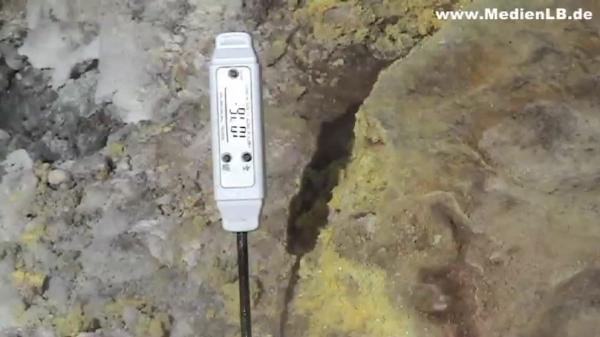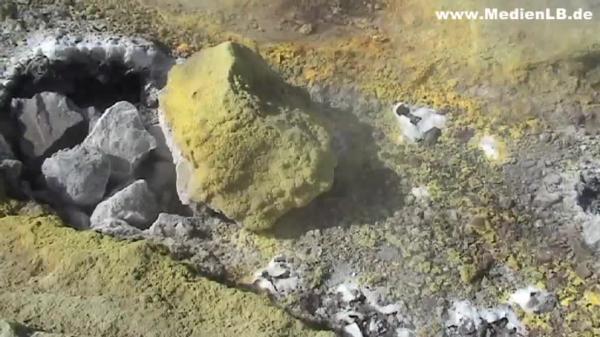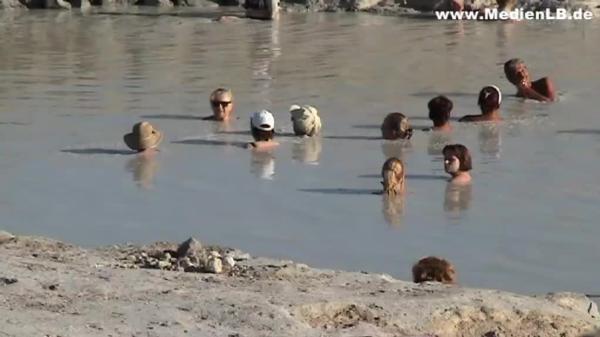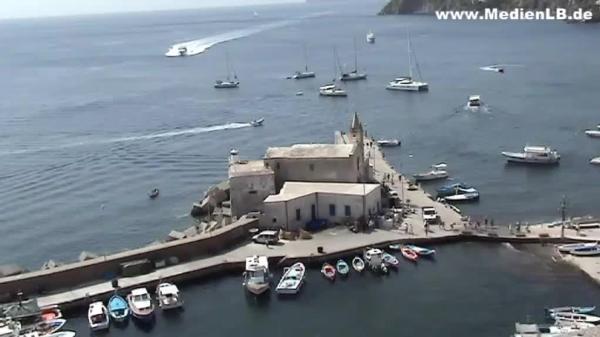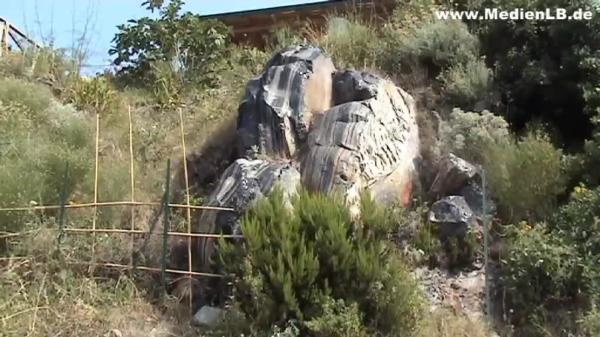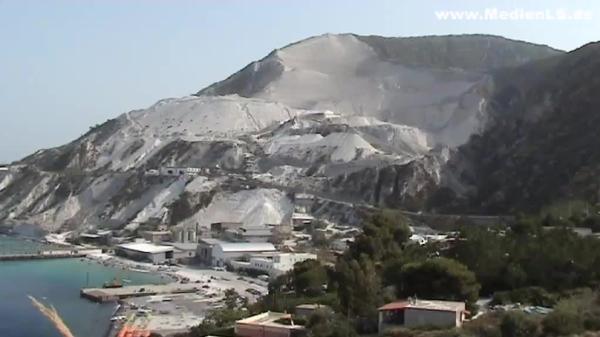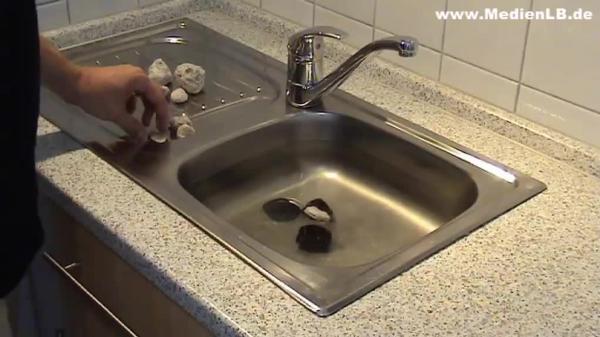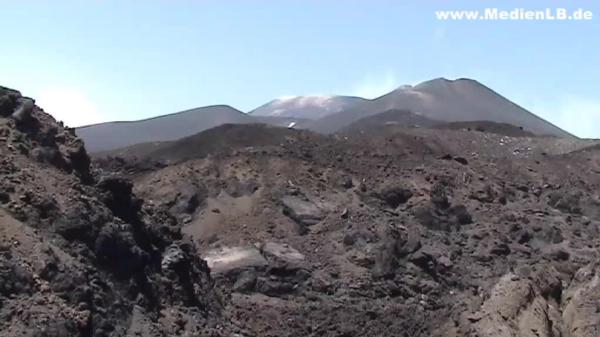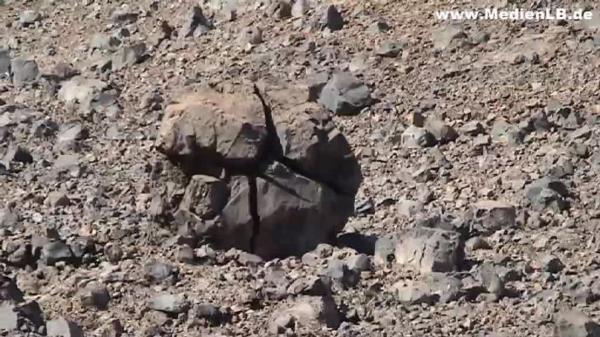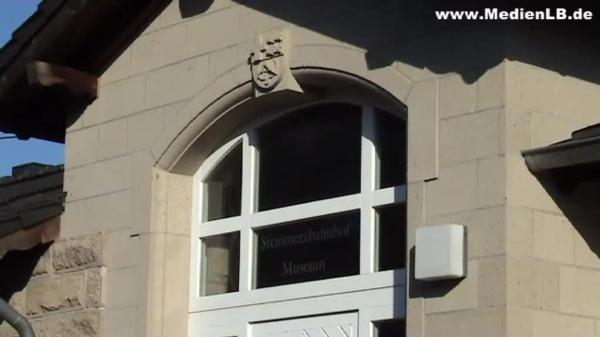Vulkane
Faszinierende Feuerberge

Volcanoes

Volcanoes - from time immemorial they have fascinated mankind by their power and beauty. Whenever the fire spewing mountains are mentioned in the media, though, it is in connection with disastrous eruptions which entail immense devastation and a lot of casualties. But there are also aspects to volcanoes that enrich economy and culture: already in prehistoric times, they supplied man with precious raw materials. In antiquity, Greeks and Romans considered the Etna the seat of the god of fire and metallurgy, and today the fire spewing mountains are often favorite tourist destinations. Moreover, it isn't even necessary to wander far afield to experience the fascinating world of volcanoes: southern Italy, but also the Eifel in Germany offer evidence of this natural phenomenon. 1. Structure of Volcanoes 1.1 Stratovolcanoes The island of Vulcano off the northern coastline of Sicily - here you find a volcano as you have always imagined it: the Gran Cratere, steep cliffs soaring high up with a funnel-shaped crater at the top.- And indeed, the similarity of the name of the island with the generic term of volcanology is no accident - both are derived from Vulcanus, the Roman god of fire. Even today, you get the impression of feeling his hot breath whenever the pungent, sulphurous fumes have you gasping for breath at the edge of the crater. But back to the structure of the volcano: the Gran Cratere is a stratovolcano. These volcanoes are characterized above all by their conical shape, with steep slopes of more than 30° of inclination and alternating layers of lava and loose-packed material such as ash. From the magma of the magma chamber under the volcano not always the same substances are formed at each eruption. Rather in loose sequence, explosive eruptions emitting ash that forms the ash layers alternate with moderate eruptions during which lava pours out of the crater. Several explosive phases may follow each other, before torrents of lava roll down the slopes again - or the other way round, several eruptions ejecting lava may succeed each other, before there is a new explosive eruption. Stratovolcanoes can be found in nearly all volcanic regions of the earth. Among them are the Fujiyama in Japan as well as the Kilimanjaro in East Africa or the Etna in Sicily. The latter shows especially clearly the alternating layers of lava and loose-packed material: behind the village of Nicolosi a road of some kilometres leads through huge torrents of lava from several past eruptions up to the mountain rescue hut "Rifugio Sapienza" at an altitude of almost 2 000 metres. Also in the city of Catania, situated after all nearly 30 kilometres away from the summit of the Etna on the sea, there are striking indications of the volcano nearby. There, even the strong walls of the Castello Ursino could only with great difficulty withstand the torrents of lava during the terrible eruption of 1669. And the elephant "Liotru", the emblem of the city, is of course made of lava. Quite a different picture is presented, however, somewhat above the "Rifugio"; expanses of ash dominate the landscape, when you look down from the funicular at a height of about 2500 metres. And if you dare to move further towards the summit in the four-wheel-drive special-purpose vehicle, you gain similar impressions: here, too, at an altitude of about 2700 metres, the mostly biting wind swirls through extended fields of ash. But to be able to see them, you must come in summer or autumn, for the ash may be covered in ice and snow until far into May. For such glacial conditions as at the Etna the Gran Cratere of Vulcano, with its just 331 metres' height is far too low, considering the Mediterranean climate there. But the alternation of different layers typical of stratovolcanoes can be found there, too: if you trudge towards the crater on the initially deep and wearying ash trail, abruptly, half-way up, the picture changes. Here you suddenly come across solid, reddish clay streaked by deep grooves due to erosion. At the western edge of the crater, you can also see the strata of material very clearly: each layer goes back to its own volcanic eruption phase. And it is quite usual that deposits of many meters’ depth form within only a few hours or days. 1.2 Shield Volcanoes Far less frequent than stratovolcanoes are the shield volcanoes. They are found especially in the middle of the ocean, for example in Hawaii or in Iceland. With shield volcanoes there is no alternating sequence of layers, but they are built up by many torrents of lava deposited one on top of the other. With slopes of 3 to 8° inclination, they are comparatively flat, however, extend horizontally up to 20 times their height. That is considerably more than with stratovolcanoes, whose width is usually limited to 3 to 5 times their height. Characteristic of shield volcanoes is, in addition, their relatively flat and basin-shaped crater, which is often filled with a lava lake. With up to 2 kilometers in diameter, this crater covers a considerably larger area than that of stratovolcanoes. 1.3 Calderas Another volcanic phenomenon, the caldera, should not be mistaken for a crater, though. The term is Spanish, means 'kettle' and denotes a circular volcanic basin with steep cliffs. The outward difference to the crater lies above all in the extension of the caldera. It usually has - like here at the Laach Lake - a diameter of several kilometres. Calderas mostly form after bigger eruptions by the volcano collapsing into the emptied magma chamber; then they are often filled with a lake. But a caldera can also form when a tremendous explosion nearly tears off the complete original volcanic cone. Just like at Vesuvius, which developed in the caldera of its predecessor Monte Somma, frequently a new volcano forms within the basin. 2. Types of Eruption 2.1 Unpredictable Reaction If you observe a volcano over a longer period of time, you will realize that it may react quite unpredictably in the course of time: the Etna, for example, hardly showed any signs of life at the end of the 90s, but then erupted in 2001 and 2002 with huge torrents of lava. After a dormant phase from 2003 to 2005, again big flows of lava poured down the slopes in the winter of 2006 and the spring of 2007. In the summer of 2007, though, when theses pictures were taken, the Etna contented itself with just emitting smoke quite peacefully. Rather a different reaction is shown by Stromboli. Its phases of inactivity do not last several years, but usually only a few minutes. Then - visible from afar - a new column of smoke appears above the summit and little later, mostly spewed-out chunks of rock hurtle down into the sea. Other volcanoes have apparently stopped their activities for good. So at first glance the Laach Lake in the Eifel does not show any visible signs pointing to its volcanic origin. Also the crater of Windsborn, situated about 50 kilometres southwest of the Laach Lake, does not look threatening at all. That such calm may be very deceptive, though, is shown by the example of Vesuvius. As long as anyone could remember, there had been no visible volcanic activity on this mountain - until its devastating eruption in 79 A.D., when also the towns of Pompeii and Herculaneum were destroyed and a lot of people killed. 2.2 Effusive Eruptions But how can these different reactions of volcanoes be explained? Magma, which mounts from the magma chamber, and especially its composition play the decisive role. If the magma is extremely hot and lacking in gases, particularly thin lava pours out. In this case we talk about a pouring out or effusive eruption. It is typical of shield volcanoes and is also called the Hawaiian type after its best-known occurrence. 2.3 Explosive Eruptions But effusive eruptions can also be found with stratovolcanoes, where they are responsible for the layers of lava. In these cases, however, the magma is, with about 800°C at ejection, several hundred degrees colder than that of the shield volcanoes. However, it contains considerably more dissolved gases. They are above all responsible for the stratovolcanoes often erupting explosively, too: for if the magma cannot find its way upwards out of the magma chamber without hindrance - for example because the chimney was blocked up during the preceding eruption, pressure is mounting within the volcano. In the course of weeks, months, years or even centuries, this pressure is increased constantly- comparable to a bottle of sparkling wine or mineral water, when shaken. At last the moment is reached, when the volcanic structure can no longer contain the enormous pent-up forces: there is an explosion. Depending upon the intensity and appearance, we differentiate between several subtypes of such explosive eruptions: in 79 A.D. Pliny the Elder described a stone-pine shaped eruptive column mounting vertically for more than 10 kilometres and then spreading out in all directions at Vesuvius. In honour of him, who died in the course of this event, eruptions with this particular appearance are called Plinianic. If the cloud from the explosion does not mount vertically, but spreads out at a relatively low point, the eruption is called Peleanic. This type is named after the volcano Mount Pelée on the Caribbean island of Martinique, where such a reaction could be observed. The Stromboli, though, gave its name to less violent eruptions, occurring in short intervals: Strombolian eruptions. 2.4 Origin of the Maars In the Eifel we finally come across another special kind of explosive volcanic phenomena: the maars. At their formation, mounting magma played the crucial role - as already with the shield- and stratovolcanoes. On its way up, the magma hit on a rock stratum carrying water. Coming into contact with the hot molten metal, the water evaporated abruptly, triggering an enormous steam explosion. Depending on the maar, this blew up a crater with a diameter of up to two kilometres and a depth of several hundred metres, into which then the destabilized rock of the edges and part of the spewed-out material tumbled. Another part of the spewed-out material was deposited around the crater, which afterwards got mostly filled with collecting ground water in addition. Thus in the craters, caused by the explosions, volcanic lakes were formed, like here the Immerather Maar, which were mostly surrounded by a circular wall covered with vegetation. 3. Moderate Activities 3.1 Mofetts The Eifel is a volcanic area still today, with a landscape marked by a long time of active volcanism, although the last eruption occurred some thousand years ago. So calm seems to have settled on the maars and volcanic lakes of the region - and nothing points to a possible change in future. Almost nothing! On the shore of the Laach Lake, carbon dioxide bubbles come to the surface, and there are similar gas escapes on land nearby, so-called mofetts. The occurrence of these two phenomena hints at a still existing magma chamber deep inside, even though the gases coming to the surface are cold. It is true, the Laach Lake volcano has been dormant for more than 10.000 years, but from a geological point of view this is no more than the beat of an eyelash - too short to allow the concluson that any eruptive activity is definitely and lastingly over. But that does not mean either that we will have to expect an eruption soon - it cannot be ruled out for the future, though. Then the tranquil life may be over even in the monastery of Maria Laach. 3.2 Cold-water Geysers In the small town of Wallenborn, about 45 kilometres southwest of the Laach Lake, carbon dioxide gases are largely responsible for a volcanic phenomenon: the "Wallende Born", in the vernacular also called "Brubbel". For such a cold-water geyser, in addition to a magma chamber in great depth where the carbon dioxide originates, a second prerequisite must be met: there must be an impermeable layer of clay. This got pierced in the case of the "Brubbel", so that the mounting carbon dioxide can dissolve in the cold well water. After a certain time, however, the water is saturated and no longer able to add any more carbon dioxide. Because of the constant influx of carbon dioxide, first small bubbles of gas form in the water. They cause some movement on the surface - the surge or "Brubbeln" to which the source owes its name. With the constant addition of carbon dioxide the bubbling keeps increasing, for the gas bubbles extend continuously the nearer they get to the water surface, due to the fact that the pressure of the water column decreases towards the top. So the gas bubbles displace more and more water - which again reduces the pressure in the well. The consequences are: already dissolved carbon dioxide forms bubbles again - and newly added carbon dioxide cannot be absorbed any more. Thus the gas bubbles mount faster and faster, sweeping other bubbles and water up with them: the geyser erupts with an up to 4-metre-high fountain. Afterwards, it still takes some time until the "Brubbel" calms down, and the water does not splash over the edge of the basin any more, for the excess carbon dioxide must first be released into the air. About 35 minutes after the last eruption, the next fountain can be observed at the "Wallende Born". 3.3 Fumaroles On active volcanoes or where they have been dormant for only a few years or decades, you find more gas or steam emissions than in the Eifel - like here at the craters of Vesuvius during the eruption of 2002. These emissions are called fumaroles and are, with temperatures between 100° and 800 ° C, far hotter than their "relations" on the Laach Lake, because they are linked to a geologically recent magma chamber. Many fumaroles, however, contain a high amount of carbon dioxide, too, which is not quite without problems: carbon dioxide, deadly in its concentrated form, has a higher density than air and so mainly accumulates in depressions. Therefore people should be seriously discouraged from descending into the bottom of the Gran Cratere on Vulcano, although those who left these stone marks there were probably not punished for their imprudence and allowed to leave the bottom unharmed. 3.4 Solfataras Much more striking than the odourless carbon dioxide is another substance occuring often in connection with volcanic activities: sulfur. It does not only attract attention because of its bright yellow colour, but also the pungent smell of rotten eggs emanating from its compounds quite simply cannot be ignored and clings to your clothing for weeks. Moreover, if sulfur gets into contact with cloth, it slowly but surely etches holes into it. More or less the same happens to the human lungs. Therefore a sign warns against the toxic fumes already before the ascent. Nevertheless, on the spot it is difficult to resist the fascination of these fumaroles with sulfur emissions, which are called solfataras after an occurrence in the Solfatara crater at the Gulf of Naples. 3.5 Mud Baths Those who have not poked their noses sufficiently into the sulfur yet, on an excursion to the Gran Cratere, can also take a bath in the "Acqua di Bagno" as a conclusion to a visit to Vulcano. The mud pond, 34° hot, is fed by small fumaroles at the bottom of the basin and contains several minerals besides the sulfur compounds responsible for the - let's say - aroma. This combination is said to provide relaxation for the muscles worn out by the hike to the crater - and is supposed to bring relief from rheumatic complaints or neurodermatitis. The mud as well as the sulfur above have their effect on any kind of metal, too; the latter oxidize and become unsightly very fast. So you had better leave valuable jewellery at home, when going on a trip to Vulcano. 4. Mining Products and their Uses 4.1 Obsidian Today, Lipari is the main place on the island of the same name and the whole archipelago, junction of ferryboat services, market place for regional products, and main tourist destination at the same time. More than 6000 years ago, the inhabitants of the island must have been immensely rich, going by the standards of the time, for they had plenty of one of the most precious raw materials of that age at their disposal: obsidian. This sharp-edged volcanic glass was the material for tools and weapons and therefore in high demand during the Neolithic period. From Lipari it was spread all over the western Mediterranean. Only at the advent of metal processing did the need for obsidian decrease, so that the rich deposits of Lipari became insignificant. But the value of the black stone is still sufficient to improve the personal cash flow of many an islander. 4.2 Pumice Stone Another volcanic raw material is extracted in Lipari in quite a different amount: pumice stone. In the Campo Bianco, the "White Field" near Porticello in the northeast of the island, a whole mountain is being cleared away - the layers of pumice are up to 200 m deep. Nearly one quarter of the surface of Lipari consists of pumice stone. Still, it is almost unimaginable that, for example in 1960, about 200.000 tons of this material were quarried. Today this huge output is far from being reached any longer, nevertheless the raw material is still used in many ways as building material with good insulation qualities, for grinding and polishing or filtering - not to forget its contribution to the production of stone-washed jeans.Contrary to the past, when many quarrymen used to suffer from black lung, also called "liparosis", today extraction and loading is largely automated. Also near Mendig in the East Eifel pumice stone is industrially quarried. It was created during the last eruption of the volcano of the Laach Lake, almost 13.000 years ago, which must have been one of the most violent explosions of the more recent geological history: material from this eruption was hurled even as far as Sweden and Northern Italy. The most impressive evidence of this occurrence, however, is the Wingertsberg Cliff, which was uncovered some years ago during mining activities. Here, at a distance of about two and a half kilometers from the Laach Lake, the brown-grey strata of pumice most probably were deposited up to 40 meters high within a few days during the volcanic eruption. Only in few other places on earth you become so drastically aware of the immense capacities of volcanism to change whole landscapes. 4.3 Experiment But let us go back to Lipari once more: although obsidian and pumice stone occur there in immediate vicinity, they have completely different properties: in our "sink experiment" the heavy volcanic glass goes down at once. The extremely light pumice, however, floats on the water surface. In view of this observation it is almost unbelievable that both materials have identical chemical composition. Where, then, do the differences in appearance and property come from? They are due to their respective processes of formation: the pumice stone is created at the beginning of the eruption, when molten rock, rich in gas, gets foamed up at its emission as soon as the pressure is lessened. Whereas obsidian is formed in a later eruption phase, when the gas has already completely escaped from the lava which then cools down quickly. 4.4 Magma, Lava and Basalt Primary substance for the formation of pumice and obsidian is magma, hot molten rock pushing to the surface from the bowels of the earth. From this magma a whole range of further products may originate. Most people will certainly think of lava first. Like here on the Etna, it mostly occurs as black lava with irregular, sharp-edged structure. Whereas at shield volcanoes lava is mostly more liquid, with a smoother surface; because of its sometimes bone-like appearance, it is then called skeleton lava. After cooling down, lava torrents represent a valuable source of materials: like in the Ettringer Lay in the East Eifel until some time ago, basalt lava is quarried in many volcanic areas, which then is used in house or road building - only think of the cobblestones on many roads. Also millstones often consist of basalt - here in front of the volcano museum, a magnificent specimen that was shown at several world exhibitions. Not everywhere was the material so easily accessible as in the Ettringer Lay, though: in Mendig it had to be quarried below ground for centuries, as the local lava streams were covered with huge deposits of loess and pumice. In the humid caves, at temperatures of only 6 to 9°C, quarrying was agony: a quarryman's life expectancy was only 35-40 years, then they got killed by gout, rheumatism and tuberculosis. It was not until the 19th century that the caves of Mendig were used in a more philanthropic way: up to 28 breweries stored their beer in the gigantic columned halls at ideal humidity and temperature. Thus the town had the by far greatest density of breweries in the whole Reich - there was one brewery for every hundred inhabitants. Today there is only one left. 4.5 Pyroclasts and Blocks During explosive eruptions lava pours out only rarely, if at all. Near the crater you often come across whole legions of rocks of the most various sizes: if they were spewed out as hot chunks of lava and have solidified during emission, they are called volcanic bombs; if they are pieces of solid rock torn off by the explosion, they are called blocks. Scraps of lava descending the volcanic slope still hot are scoria. Besides bombs and scoria, basically all volcanic products which derive from bursting lava are subsumed under the generic term of pyroclasts - which means "broken fire". Among them are, in addition to small fragments of rock of 2 to 64 millimetres called lapilli, also the ashes. These are the smallest eruption products with a grain size of less than 3 millimeters. 4.6 Tuffs and Lahars Under the influence of water loose volcanic material often solidifies like concrete in the course of time: tuff stone is formed. It is also valuable building material, which characterizes the appearance of villages like Weibern, where tuff is not only quarried but also processed. Also these deposits, situated in Niederzissen, only a few kilometres away from Weibern, are the result of volcanic activity. Contrary to tuff stones, however, they show a very irregular structure with enclosures of various kinds of rock. This is due to the different formation of the two structures. While tuff was formed from loose volcanic material, which solidified after deposition, the cliff in Niederzissen is the result of complex processes of rearrangement. If an eruption is accompanied by heavy rain, the rain water may set in motion a torrent of mud, consisting of ejected, not yet solidified ashes and the existing subsoil of loess and chunks of rock. This so-called lahar hardens only after the materials have been mixed for some time and the flow has come to a standstill.


